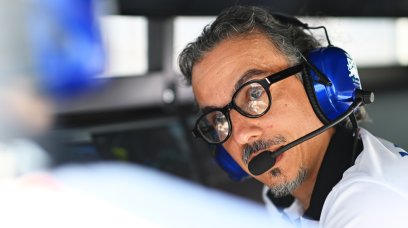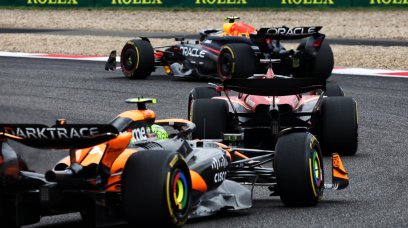One of the big changes on the Formula 1 horizon is regarding tyre blankets, and the push from the FIA and Pirelli to ban them for 2024. The phasing out of tyre blankets is underway, but this has received pushback from the teams and drivers over safety concerns. The driver's fears are centred around the use of cold tyres, which will increase the driving challenge in the opening laps after a pit stop. Max Verstappen predicted that there would be "a lot of crashes" should the move go ahead, but extensive tests are planned for 2023 in an attempt to work towards the abandonment of tyre blankets for the '24 season.
The pros and cons of getting rid of tyre blankets
According to RacingNews365.com 's sources on the F1 Commission, consigning tyre blankets to the history books could have a strong environmental impact by saving huge amounts of energy. The expectation is that this would also reduce infrastructure demands at circuits, especially in the last minutes before the race when power demand is at its highest of the entire weekend, and lead to ultimately cheaper equipment costs for the teams - as well as enhance and place additional emphasis on the driver to get heat into their tyres without losing too much time. However, these advantages are countered by the adverse possibilities that the tyre blanket ban could have on race strategy. With high tyre pressure and considerably lower temperatures, there is the threat of increased degradation and wear. In addition to the driver concerns over safety at pit-exit, the knock-on effect is also being considered by championship bosses. Teams will find alternate ways of heating their rubber and so these scenarios must all be evaluated with any potential loophole firmly closed.
The tyre blanket plan for 2023
During the Mexican Grand Prix weekend, Pirelli ran a tyre test during the second practice session for 2023 compounds, while also experimenting with a major step to ban the blankets. The gradual phase-in of the ban began in the 2022 season, with the maximum tyre heating temperature reduced to 70 degrees Celsius across both front and rear - usually in a three-hour period. At the United States Grand Prix, this was further reduced to 50 degrees during the Pirelli tyre test in FP2, but proved unfavourable with the drivers. A solution was found in Mexico's FP2 test a week later, where the tyres were heated to 70 degrees again, but for two hours. This provided interesting data for Pirelli - with some of the driver's safety concerns alleviated by the '70 degrees at two hours' test when presented with the data. According to Pirelli, during the three-hour heating period, it was found that the steep curve of heating would plateau after just two, leading to an hour of wasted energy. It is this plan that is set to be carried through into 2023, along with a simple reduction in the number of tyre blankets (for slick tyres) available for each driver - from ten to seven. In addition, a pressure control valve will be evaluated to raise the possibility of lower starting pressures from 2025. It is not an essential step in the road to banning blankets, but could improve tyre performance if implemented. During 2023, all Pirelli track testing is to focus on the goal of no blankets for the following season, with RacingNews365.com 's sources indicating a final decision is set to be taken after the test at Silverstone following the British Grand Prix in July. After this extensive period of testing, to officially ban tyre blankets for 2024, the FIA, F1 itself and five of the ten teams must be in agreement with the proposal.
Pirelli testing wet tyres
As well as working towards the ban, for which there are ten different tests planned in 2023, Pirelli are also focused on the wet-weather tyres, and improving them. During the wet Japanese Grand Prix, the full wet tyres were only used when mandated by the FIA, with drivers quickly switching to the intermediates when the race eventually resumed. Across 2023, four separate wet-weather tests are planned at Paul Ricard and Fiorano in an attempt to solve the warm-up and performance issues drivers have highlighted.
Most read



















